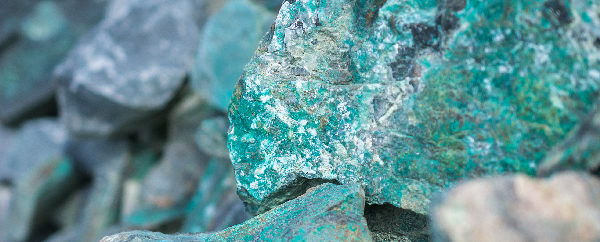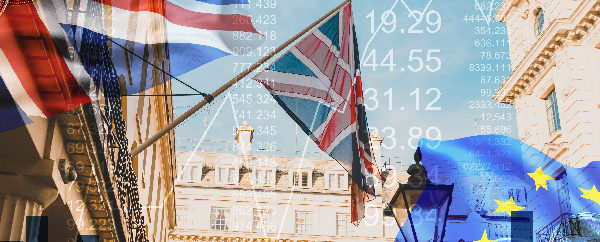Carbon is an interesting element, to say the least. It’s the basis for all known life on Earth and constitutes up to half of all biomass.
It’s the basis for the ‘lead’ in pencils, in its naturally occurring allotrope graphite, but it also occurs naturally in another form – diamonds.
These sparkling gems are formed deep below the Earth’s crust at very high temperature and pressure, before geological activity like volcanic eruptions bring them to the surface.
For thousands of years, they have been prized by humans for their beauty and their hardness, which makes them useful for cutting and engraving.
Diamonds have several things going for them that should make them a good investment:
- They are rare, which helps to maintain an imbalance of supply to demand.
- They are pretty, which adds demand from the consumer jewellery market.
- They are useful, occurring naturally in sizes that are a good fit for their applications.
In addition to this, there are several characteristics that help to define the quality – and therefore the value – of a diamond.
Just a few examples of this include the size or weight, the clarity (which affects the sparkle when used in consumer products) and the colour, as natural coloured diamonds are even rarer than colourless diamonds.
All of this adds up to a commodity with multiple uses – including consumer-facing and industrial – and plenty of ways to determine its quality, all of which might sound similar to a certain yellow metal.
Why aren’t diamonds traded like gold?
Unlike the yellow metal, diamonds are typically not traded as a mass commodity. ‘Diamond bullion’ historically has not been a thing.
It’s not really hard to understand why. Diamonds occur as discrete objects, but they have relatively low granularity – the most valuable diamonds are also the largest.
Because of this, it’s difficult to trade in ‘diamond’ as a mass commodity in the way that ingots of gold can be bought and sold, melted down and used to create discrete items of jewellery.
In essence, gold is traded primarily in mass form, with only a relatively small number of unprocessed gold nuggets coming up for sale; with diamonds, it’s the other way around, with the greater market value placed on larger, individual gems.
That makes it difficult to give diamond a quoted price as a mass material and effectively constrains the market to individual sales.
Are diamonds valuable as an investment?
Despite all of the above, you can’t deny the value of diamonds as an investment opportunity.
The total value of diamonds worldwide is hard to pin down but is likely to be several trillions of dollars, with billions of dollars generated by the diamond jewellery industry alone each year.
But it’s been a turbulent decade for diamonds. Following the global economic slump of 2007-08, diamond mining surged as the gems were still selling at relatively high prices.
The diamond supply chain is complex. Mines must sell them to processors who cut and polish them, these cut diamonds are then sold on to jewellers, who must work them into finished jewellery which eventually reaches the consumer market.
New mines can take anywhere from four years upwards to have a visible effect on market prices – and that means the value of the market lags several years behind the real-world activity.
By 2011, diamond prices peaked, and with high levels of mining activity continuing, supply started to outstrip the pace of demand.
As of 2019, there’s an oversupply of diamonds in the supply chain and although the many levels of middlemen mean price volatility can be absorbed to an extent, the strain is starting to show.
In the summer, Rio Tinto announced it planned to close its Argyle mine in Western Australia, not only the biggest in the world, but also the source of nearly all natural pink diamonds.
Market activity is cyclical – at some point this significant decrease in mining activity is very likely to turn into a surplus of demand, rather than a surplus of supply, and diamond prices could rise substantially if and when that occurs.
For investors who have the resources to adopt a ‘wait and see’ approach, now is the time to watch the diamond market carefully if you want to buy in at its deepest nadir.
How to invest in diamonds
As mentioned, diamonds tend to be prized as unique, individual items. Investing in them is less like buying a commodity, and more like alternative investments like art and fine wine.
If you want to invest in diamonds, you should be looking out for opportunities to buy good examples at auction or through private sales, especially if the price is right.
Remember to factor in any fees payable on the transaction. These can be as much as 12-18% on auction sales, and the total impact of fees can reach around a third of the value of the diamond itself.
An emerging trend is the attempt to create a fungible diamond trading exchange built around blockchain – the same technology that is used to trade cryptocurrencies.
This is seeing diamond ‘coins’ and ‘bullion’ created by embedding several diamonds with an equivalent estimated total value into a disc or bar-shaped holder.
Whether this will become a commonly recognised way to trade the gems remains to be seen; however, it proves there is interest in trading diamonds as a commodity.
For investors, these trading platforms are worth watching not only as a potential source to buy diamonds from in the future, but also because they could represent a significant customer in the years to come.
Unlike currency exchanges, if they see substantial popularity diamond exchanges will need a constant supply of the gems in order to continue to issue these ‘coins’ and ‘bars’.
That could spell good news for investors with a good-sized collection of small but perfectly formed diamonds that fall into the range of values needed for them to be used in this new kind of diamond bullion.
https://www.valuewalk.com/2019/06/sets-of-diamonds-credible-alternative-investment/
Disclaimer: The information provided here is not investment, tax or financial advice. You should consult with a licensed professional for advice concerning your specific situation.




